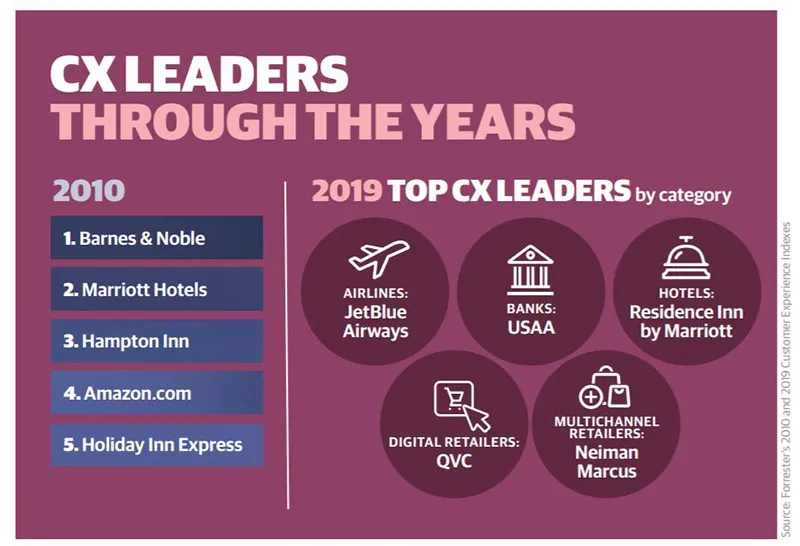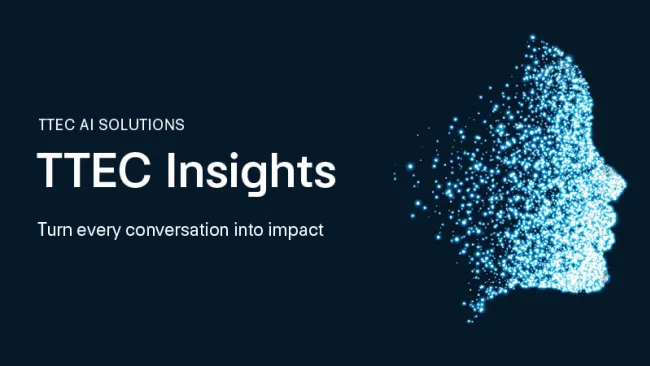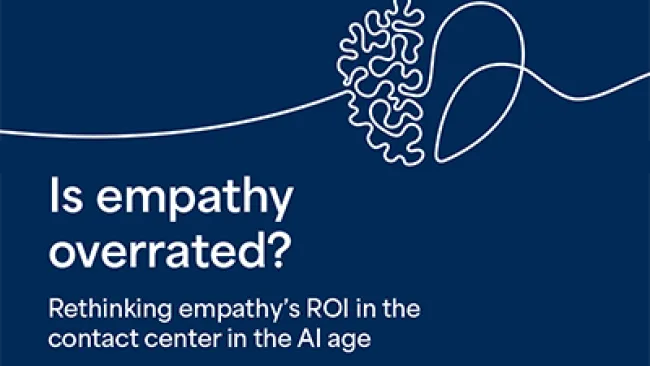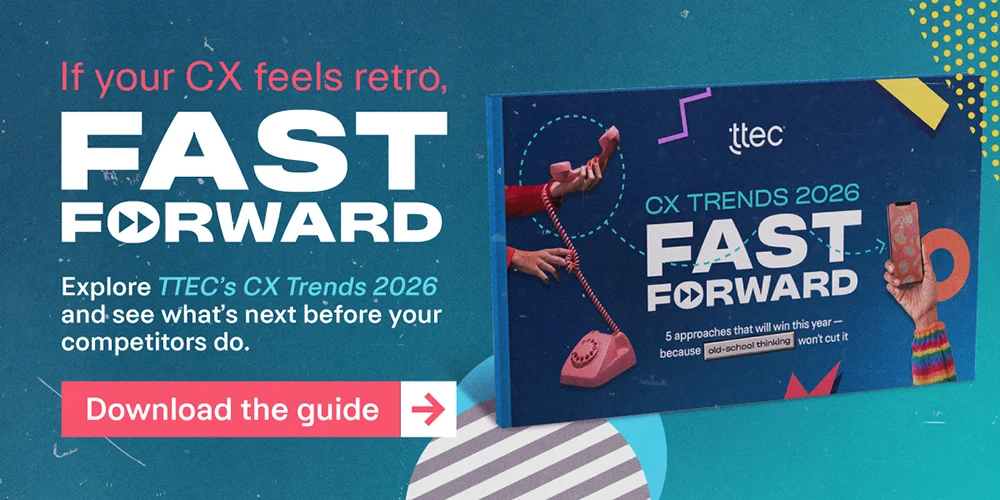A lot can happen in 10 years—in customer experience it’s a lifetime. As we enter a new decade, it’s worth reflecting on key areas of the customer experience that have evolved, including the emergence and prioritization of customer analytics, employee engagement, and personalization as a differentiator.
CX from a rearview mirror
Ten years ago, businesses were still reeling from the Great Recession. Smartphone ownership was in its infancy. Apple unveiled the first iPad tablet computer and Time magazine named Facebook founder Mark Zuckerberg 2010’s Person of the Year. Terms like AI-first, experiential retail, and data-driven personalization were not yet part of the business lexicon.
But companies were already thinking about the customer experience, though progress was limited. According to Forrester’s “The State of Customer Experience 2010” report, 90 percent of executives thought that customer experience was very important for their companies and 80 percent were trying to use it as an area of differentiation. A lack of funding was the top problem—some things don’t change—and less than one-third of respondents believed that their company exhibited mature customer experience competencies.
When it came to customer insights, an Inc. magazine article outlined the purpose of customer analytics, which largely applied only to understanding website performance. “Every company, regardless of size, requires multiple tools to understand the performance of its website, happiness of its customers and to gain key context from competitors,” read the 2010 article. The article also advised readers to spend the majority of their analytics budget on “paying someone to filter through all of that information.”

Charlene Li, founder and senior fellow at Altimeter, a Prophet company, described the ways that companies collected customer data and processed it for insights in 2010 as “pretty scary for how limited it was. It was mostly survey-oriented, and if there was a good report on personas and customer journeys, none of it was in real time,” she says.
More powerful analytics tools and access to a greater variety of customer data have enabled brands to anticipate customer needs, Li notes. “Location data alone is something that companies didn’t really have [in 2010] and that’s how much things have changed,” she says. “And I think that’s the biggest difference now, in that now we can understand customer journeys on the fly based on a previous interaction that you may have had just seconds ago with a brand.”
While collecting and acting on real-time data continues to be a challenge, companies are increasingly leveraging insights and are beginning to see results. Indeed, 60 percent of enterprises use real-time customer analytics to improve customer experience across touchpoints and devices, and 58 percent are seeing a significant increase in customer retention and loyalty as a result of using customer analytics, according to a 2018 study conducted by Harvard Business Review Analytics Services.
Getting serious about operationalizing CX
More powerful survey and analytics tools have enabled brands to better anticipate customer needs, agrees Adam Edmunds, president of Podium, an enterprise interaction management platform. Prior to Podium, Edmunds founded Allegiance Software, which was acquired by Maritz Research to form MaritzCX. “In the last decade there’s been this massive push to build up the customer experience where companies realized that they need to understand what customers expect from them, what they’re good at, and where their gaps are,” Edmunds says. “But where a lot of companies are falling flat is they’ll spend millions of dollars on survey products to understand what’s broken without actually making operational changes to fix the experience.”
As such, there’s an opportunity to make it easier for companies to make operational changes to better serve customers, Edmunds says. In fact, operationalizing the customer experience is the second biggest challenge that companies face in improving the customer experience after a lack of real-time customer insights, according to a survey by Verndale, Sitecore, and Vanson Bourne.
Operationalizing the customer experience begins with understanding where the customer is in their buying journey and identifying pain points in the journey. Customer journey maps are a popular tool for doing exactly that, but “journey mapping in itself is not enough,” says Kelly Price, principal analyst at Forrester. “Journey maps are not reflective of the entire organization—they’re rarely connected to the internal processes, technology, and data that’s needed to enact operational changes. They’re great for framing the steps that the customer is going through, but there are other contextual layers to consider.”
For instance, having a deep understanding of customer needs and expectations through contextual data, scenarios, brand perceptions, and other types of insights, can better help organizations identify misalignments with its internal operating model that are leading to customer dissatisfaction, unnecessary costs, and lost opportunities.
Leaders need to take ownership of and be accountable for operationalizing CX data, Price explains. One example of how companies are doing that is by building what she describes as a “hybrid team” that’s involved in day-to-day product decisions that also works cross-functionally with the rest of the organization to break down organizational silos and align internal operations to customer needs.
And while the creative side of customer experience design often receives more attention, failing to make appropriate technology and process improvement investments sets up a company’s CX strategy for failure. To transform the customer experience, leaders need to think strategically across the entire ecosystem that is responsible for delivering the customer experience. “It starts with a clear understanding and vision of who are the customers that you’re trying to serve, who are you as a company, and how does that feed into a system of prioritization,” Price says.
CX leaders also need to give up on the notion that they’ll “ever get to zero challenges,” she adds. “Instead, think about what is most important to fix and why.”
Getting closer to EX = CX
The global recession of 2008 to 2010 affected nearly all types of workers, from white collar professionals to those in manufacturing jobs. The recession eliminated over 7.9 million jobs, some of which never came back. At the same time, companies began to look to AI and automation technology to shift customers to self-service, reduce staff, and increase savings.
However, it turns out that while AI-powered self-service can efficiently handle simple transactions, human employees are still needed to help customers with more complex needs. Or, as Mahesh Chaddah, co-founder of Reservations.com, puts it, competing on customer experience is “about the human element—making it more efficient and effective with technology.”
For questions that stump bots, companies need to make sure associates have the skills, training, and tools to provide the best answers. However, problem solving, critical thinking, innovation, and creativity are the top soft skills missing among workers, according to a 2019 survey of HR professionals by SHRM.
While there is a growing acknowledgment of the importance of reskilling employees and driving greater employee engagement, connecting employee experience to the customer is very much in the early stages, Li notes. “In terms of progress, companies are still crawling at this point,” she says. “The reality is, most companies are still struggling to tie all the different pieces of the customer experience together and it will take even longer to tie that to employee experience.” For the near future, expect companies to continue focusing on modernizing customer touchpoints, she says.
From mass personalization to strategic personalization
In 2010, Amazon was a pioneer in mining and using data to give personalized recommendations. Of course, today most companies, whether B2B or B2C, offer a curated user experience. With the onset of big data, companies have the ability to understand how customers use their products and services, then guide them to complementary ones. “We’re at the point now where it’s almost a knee-jerk reaction of firms using big data to try to personalize every experience and every product to each customer,” says Christie Nordhielm, associate teaching professor at Georgetown University’s McDonough School of Business. The problem with a blanket approach to personalization, Nordhielm notes, is that it is no longer a differentiator and it drives up acquisition costs.
Smart firms personalize strategically based on their core competencies. “For example, if a firm’s main benefit is convenience, focus on that,” Nordhielm says. “There are many ways to personalize an experience, but some could increase customer wait time and actually move away from the core competency. What the firm should do is identify ways to deliver personalized convenience.”
Winning the long game
As customer experience evolves, the main takeaway is that CX is a continuous improvement process rather than a one-off activity. And the pressure to get the customer experience right is only increasing. Companies that thrive in an era of rapidly changing customer expectations will use CX as a springboard to align their operations with changing needs. It’s about going beyond short-term transformations to building a self-sustaining customer-driven company.
















